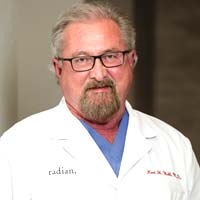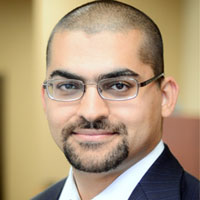Why Should You Consider Hair Transplant in 2018?
Hair Transplant Surgery, also known as Hair loss surgery, has undergone rapid technological advances. From the days of large scars and hair plugs, it has come a long way. Both sexes opt for this type of operation these days, given that the benefits are not one but many for them. The operation involves the implantation or introduction of high quality grafts in the balding spots. A great deal of accuracy is needed to ensure the success of these surgeries, and make patients achieve faster recovery – so as to be able to get back to their daily life and activities more quickly. Find out about the main reasons why you should opt for hair transplantation.
10 Reasons to Consider Hair Transplant in 2018
- Reversing baldness pattern
- Natural results from transplants
- Permanent results can be achieved
- High chances of success at the right age
- No need for harmful medications
- Getting increasingly affordable
- Boosting confidence and self-esteem
- Easier recovery
- Can help cure migraines
- More accuracy due to AI and Robotics
Reversing baldness pattern
If you have been balding awhile, you need a doctor who can work on a plan to reverse the baldness pattern. He can detect and determine where the thinning will start next, and the treatment will focus on filling those spots in. The plan of treatment should be more individualized, and customized to satisfy your requirements.
Natural results from transplants
Unlike what was the case even a decade back, you can get fully natural results from hair transplant operations. With the help of new advancements and technologies, your hair surgeon can make your bald areas look naturally hairy. Nobody can tell the new ones apart from the original hair strands even from a close distance.
Permanent results can be achieved
With hair loss surgeries it is possible to obtain lasting results. You can enjoy a healthy, fully hairy head for the rest of your life. There are surgical processes such as Follicular Unit Extraction (FUE) and Multi-Unit Graft Surgery to help you get a nice head of hair.
High chances of success at the right age
Timing is all, as far as hair transplantation is concerned. Most physicians recommend waiting for at least 30 years of age, or over 5 years of constant baldness, before undergoing hair transplantation surgery. It is not a good idea to opt for surgery right after hitting puberty, at a time when hair loss is common for some time.
No need for harmful medications
With these types of surgeries, you do not need to fall back on medications that do not work for hair loss reversal or which manage to treat the condition somewhat but produce very unpleasant side effects along the way.
Getting increasingly affordable
The process is becoming more and more affordable with passing time. The expense of hair replacement is generally related to the amount of hair relocated. On an average, the number of sessions and the specific needs tend to vary from one patient to another. Following a free in-depth consultation, doctors offer a written estimate along with the entire cost of the process. Also, seeking hair transplant in countries like Turkey, India, Mexico and Thailand where medical procedures like transplant and other surgeries are available at much cheaper rates
Boosting confidence and self-esteem
– With this type of operation, people who are bald or have been experiencing baldness for some time can get back their lost confidence. Once hair starts thinning or falling, most men and women become extremely conscious about their facial appearance. They believe that the hair loss has made their personality take a hit. With a successful hair transplant procedure, both sexes can feel more self-assured.
Easier recovery
FUE is a minimally invasive process, and any inflammation or redness that results from the process can be usually cleared up in only a week. Often, patients are able to get back to work the following day. It is very advantageous for people who wish to reverse hair loss with surgical methods but are concerned about taking extended leave from their workplace. In most cases, they do not experience any side effects from this process. This makes it a very wonderful method.
Can help cure migraines
Following transplants, there is often no need for analgesics for migraine sufferers. This is because a hair transplant operation can destroy scalp’s nerve endings, thus lowering pain signals. A Turkish research indicates that this operation helps prevent migraines in people who have experienced the painful sensations for up to two decades. Migraine sufferers do not need any pain-reliever medicine after going through hair transplantation.
More accuracy due to AI and Robotics
Although the use of robotic technology has only begun and is still in its nascent stages, it is anticipated to experience more widespread usage in the coming years. AI-guided tools assist in 3D simulation of the effects that are possible from hair transplanting. It allows patients to understand how success the operative process can be, when it comes to addressing their specific hair loss situation. With Robotics, the risks of errors are minimized as well. Doctors and cosmetic surgeons can get fantastic visual details of the area to be treated, with stereoscopic digital mapping in HD quality. It is possible to map the recipient site more easily. The use of Artificial Intelligence algorithms can help detect and choose the main hair for the purpose of graft harvesting. Robotic image-guided alignment is used to harvest the grafts.
Benefits of AI and Robotics in Hair Transplantation
FDA-approved – The Food and Drug Administration (FDA) has approved the use of robotics technology in transplanting hair, when it is physician-assisted.
Better visual details - Doctors and cosmetic surgeons can get fantastic visual details of the area to be treated, with stereoscopic digital mapping in HD quality. It is possible to map the recipient site more easily.
Easier hair detection – The use of Artificial Intelligence algorithms can help detect and choose the main hair for the purpose of graft harvesting. Robotic image-guided alignment is used to harvest the grafts.
Superior graft quality – With physician-assisted robotic technology, strong and superior quality grafts can be introduced or planted in the spot. The quality of even the thousandth graft is alike to that of the first graft.
No fatigue – Robots, unlike humans, are not fatigued. Thus, the risks of errors in transplanting of hair grafts are eliminated here. With HD Stereoscopic Vision, each hair is tracked and monitored 60 times every second. Unlike in manual processes, the quality of the grafts is consistent all through physician-assisted robotic hair transplantation techniques.
Fast and easier – The use of Precision Robotics ensures a great deal of accuracy and high speeds throughout the process. You can achieve faster recovery as well, as can quickly get back to your daily life and activities.
With AI and Robotics under physician control, optimal outcome and aesthetic hair pattern can be ensured.
Hair transplantation is a continuously evolving process and newer technologies and tools are constantly being used to improve the technique. Top cosmetic physicians and surgeons in some of the state of the art clinics and hair treatment facilities are using Artificial Intelligence (AI), Robotics and other technologies to get better effects for patients. Millions of men and women suffer baldness in silence due to the high expenses and time that are involved. With modern methods and technologies, the hair loss surgery process has become much easier. The cost has also come down significantly.
If you have been experiencing balding for some time, it is better that you consult a qualified surgeon from an expert clinic and discuss your restoration requirements. An individualized operative plan will be drawn for you, depending on your restorative needs, medical history, health status and some other factors. Under physician control, optimal outcome and aesthetic hair pattern from hair loss surgery can be ensured.
Hairfear







